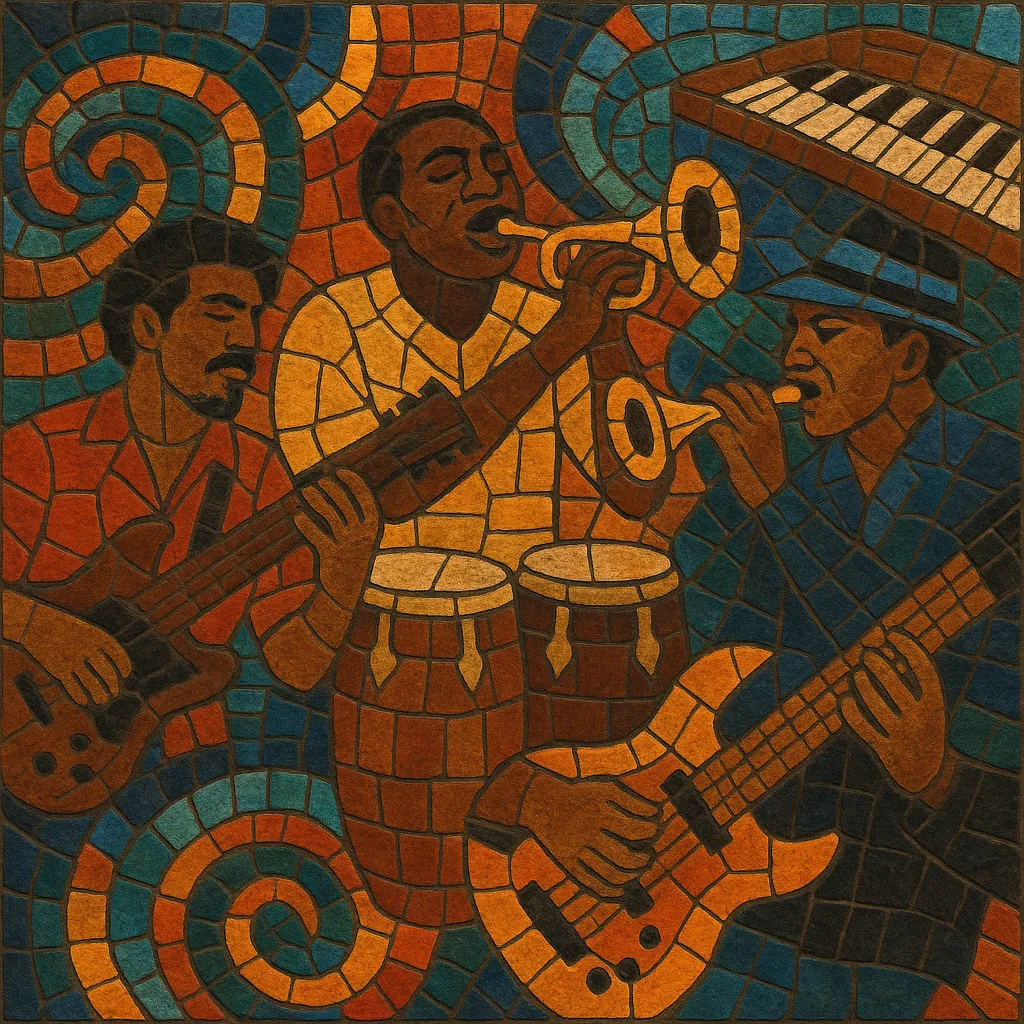Latin funk is a groove-driven fusion that blends the syncopated bass lines, backbeat, and vamp-based structures of American funk with Afro–Latin and Caribbean rhythm vocabularies.
Built around the clave (often 2–3 or 3–2), tumbao bass concepts, and a full Latin percussion section (congas, timbales, bongos, cowbell) layered over a funk drum kit, it typically features horn-section riffs, wah‑wah or percussive rhythm guitar, and electric keyboards (Clavinet, Rhodes, organ). Vocals often use call-and-response, Spanglish/Spanish lyrics, and streetwise themes rooted in urban Latin communities.
The sound coalesced in late-1960s/early-1970s Latin soul and boogaloo scenes in New York and the Chicano/West Coast movements, while parallel developments in Brazil’s soul/funk scenes (e.g., Tim Maia, Banda Black Rio, Jorge Ben Jor) helped define a broader pan‑Latin take on funk.
Latin funk grew out of the meeting point between U.S. funk and Latin soul/boogaloo. In New York, Nuyorican and Afro‑Caribbean bandleaders and session players adapted James Brown–style grooves to clave-based arranging, keeping congas, timbales, and montuno figures while adopting backbeat drumming, electric bass vamps, and horn stabs familiar to funk. On the West Coast, Chicano and Latin rock bands in Los Angeles and the Bay Area folded Latin jazz, R&B, and funk into their sound. In Brazil, a simultaneous current of soul/funk fused with samba and MPB, establishing a distinctly Brazilian branch of Latin funk.
Bands like War, Mandrill, Malo, and El Chicano crystallized the idiom with radio-friendly singles and extended jams built on syncopated bass, tightly punctuated horn lines, and Afro‑Latin percussion. Santana’s repertoire, while rooted in Latin rock, often leaned into funky grooves that influenced the scene’s crossover potential. In Brazil, Tim Maia, Jorge Ben Jor, and Banda Black Rio defined a samba‑soul/funk continuum whose tonal colors (dominant 9ths/13ths, Rhodes/Clavinet) and streetwise feel paralleled U.S. Latin funk.
Although mainstream attention shifted, the sound persisted in club culture, crate‑digging circles, and rare-groove compilations. Its fingerprints appeared in jazz‑funk, acid jazz, and Latin house. The 2000s saw a revival via groups like Grupo Fantasma and Brownout, and DJs/producers widened the palette with hip-hop sampling and modern production.
Contemporary acts and DJs continue to hybridize Latin funk with neo‑soul, hip‑hop, and modern disco/house, while reissue labels and digital platforms have canonized classic recordings. The genre remains a go‑to vocabulary for dance‑forward arrangements that need both Latin rhythmic identity and deep funk pocket.


